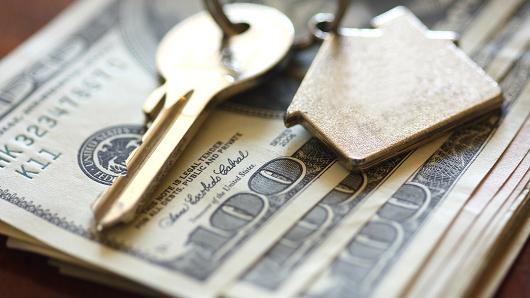Five years after the housing recovery began, 5.9 million borrowers still owe more on their mortgages than their homes are worth.
The so-called negative equity rate in the U.S. is falling, now at 12 percent of all mortgaged homeowners, according to Zillow, down from more than 14 percent a year ago and more than 30 percent at the worst of the crisis. The numbers, however, are still well above normal levels and equally spread across urban and suburban communities.
It would seem like negative equity should have evaporated by now, given how fast home prices have been rising. Several metropolitan markets have even reached new record highs in median home prices, but it hasn’t been enough to lift all borrowers.
“At its worst, negative equity touched all kinds of homeowners in all kinds of markets,” said Zillow’s chief economist, Svenja Gudell. “The type of community a given home was in — urban or suburban — mattered little. Fast-forward a few years, and the relative vibrancy of a given community and how it has performed over the past few years, and not necessarily its location in the city or suburbs, matters a great deal.”
Markets in the West, like San Francisco, Portland, Oregon, Denver and Dallas, have the least borrowers in a negative equity position. That is due to strong employment and competitive housing markets. These markets have also seen the biggest price gains over the past few years. In Seattle, for example, there is almost no difference between the negative equity rate in the city and in the suburbs. The same is true in Phoenix.
Others, like Cleveland and Detroit, have more bifurcated markets, with negative equity higher downtown and lower in suburban neighborhoods. Detroit’s urban rate is twice that of its suburban rate.
Chicago and Las Vegas share the dubious honor of carrying the highest negative equity rate in the nation, with Cleveland and Kansas City not far behind. San Jose, California, San Francisco and Portland have the lowest.
Negative equity, ironically, is one of the driving factors of higher home prices. Homeowners in this position are unlikely to sell at a loss, so they stay, which in turn lowers the number of homes available for sale. A dearth of listings over the last year is driving a faster-than-expected rise in home prices. Demand is high, and builders are still operating well below historical volumes.
“Low levels of inventory across many markets will continue to put upward pressure on house prices for the foreseeable future,” said Sean Becketti, chief economist at Freddie Mac, which this month revised down its forecast for housing starts.
While borrowers continue to gain equity every day, more than half a million still owe twice as much as their homes are worth, and more are in a near-negative equity position. That means they don’t have enough equity to afford the costs involved with selling and moving.
[Source:-CNBC]





